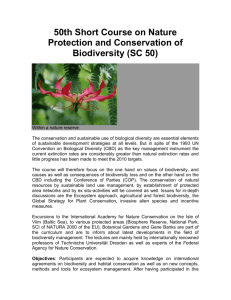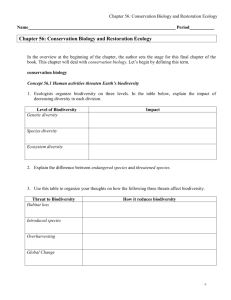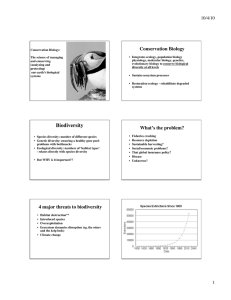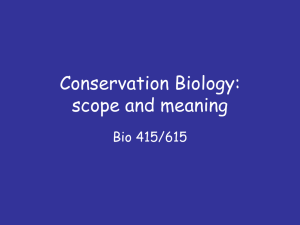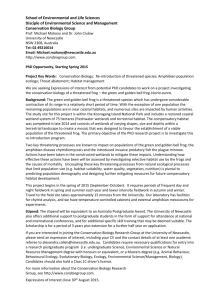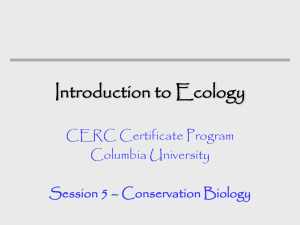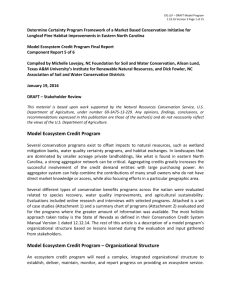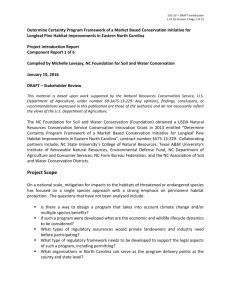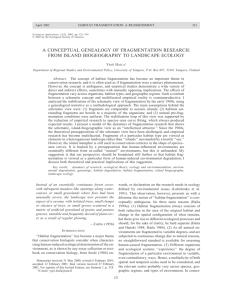Conservation Biology Discussion Questions 2010
advertisement
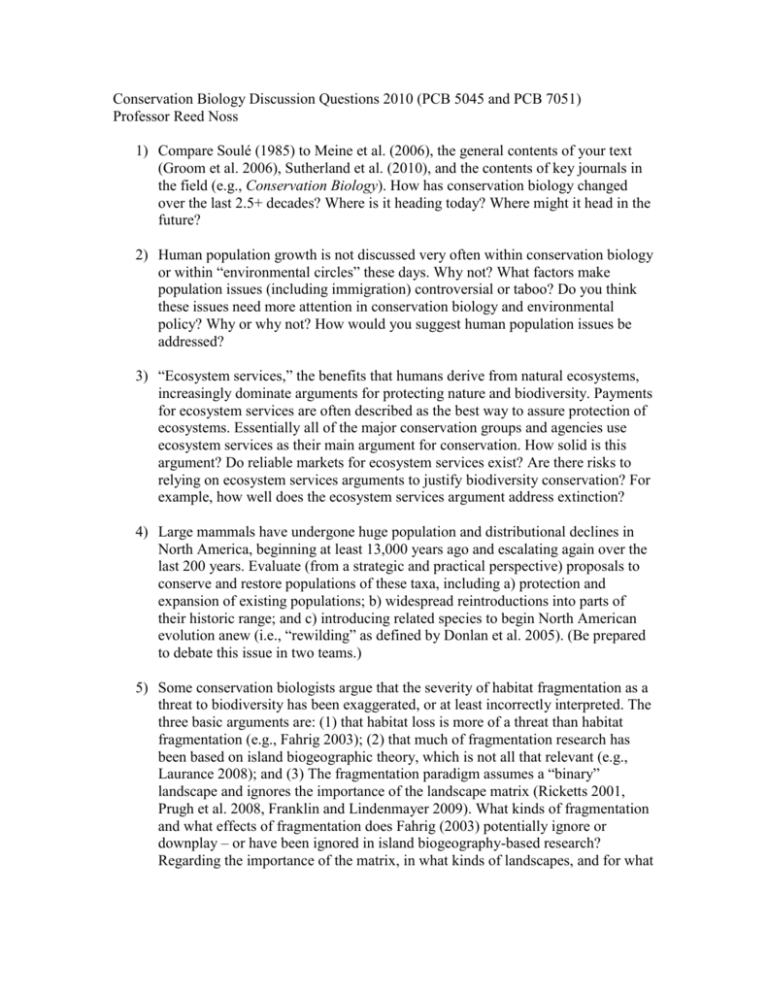
Conservation Biology Discussion Questions 2010 (PCB 5045 and PCB 7051) Professor Reed Noss 1) Compare Soulé (1985) to Meine et al. (2006), the general contents of your text (Groom et al. 2006), Sutherland et al. (2010), and the contents of key journals in the field (e.g., Conservation Biology). How has conservation biology changed over the last 2.5+ decades? Where is it heading today? Where might it head in the future? 2) Human population growth is not discussed very often within conservation biology or within “environmental circles” these days. Why not? What factors make population issues (including immigration) controversial or taboo? Do you think these issues need more attention in conservation biology and environmental policy? Why or why not? How would you suggest human population issues be addressed? 3) “Ecosystem services,” the benefits that humans derive from natural ecosystems, increasingly dominate arguments for protecting nature and biodiversity. Payments for ecosystem services are often described as the best way to assure protection of ecosystems. Essentially all of the major conservation groups and agencies use ecosystem services as their main argument for conservation. How solid is this argument? Do reliable markets for ecosystem services exist? Are there risks to relying on ecosystem services arguments to justify biodiversity conservation? For example, how well does the ecosystem services argument address extinction? 4) Large mammals have undergone huge population and distributional declines in North America, beginning at least 13,000 years ago and escalating again over the last 200 years. Evaluate (from a strategic and practical perspective) proposals to conserve and restore populations of these taxa, including a) protection and expansion of existing populations; b) widespread reintroductions into parts of their historic range; and c) introducing related species to begin North American evolution anew (i.e., “rewilding” as defined by Donlan et al. 2005). (Be prepared to debate this issue in two teams.) 5) Some conservation biologists argue that the severity of habitat fragmentation as a threat to biodiversity has been exaggerated, or at least incorrectly interpreted. The three basic arguments are: (1) that habitat loss is more of a threat than habitat fragmentation (e.g., Fahrig 2003); (2) that much of fragmentation research has been based on island biogeographic theory, which is not all that relevant (e.g., Laurance 2008); and (3) The fragmentation paradigm assumes a “binary” landscape and ignores the importance of the landscape matrix (Ricketts 2001, Prugh et al. 2008, Franklin and Lindenmayer 2009). What kinds of fragmentation and what effects of fragmentation does Fahrig (2003) potentially ignore or downplay – or have been ignored in island biogeography-based research? Regarding the importance of the matrix, in what kinds of landscapes, and for what kinds of organisms, is the matrix likely to be useful? Under what conditions does the binary model (habitat vs. nonhabitat) apply? 6) Considering what you have learned about habitat loss and fragmentation, nonnative species invasions, and global climate change (including sea-level rise), describe the components of a conservation strategy for Florida that might have a chance of maintaining biodiversity and ecosystem integrity over the next century. Consider carefully how these various threats would interact and how you would address those interactions.

